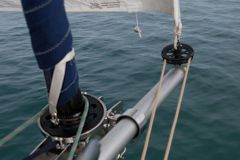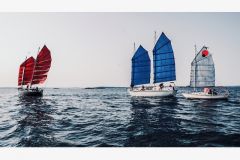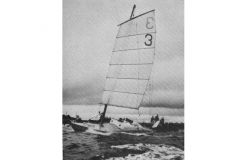Whether you're at sea or in port, alone or with a crew, there are many reasons why you may have to climb the mast without assistance. Lacking experience, it can be a frightening situation. However, with a little practice and specialized equipment, you'll realize that it's actually quite easy to climb the mast by foot.
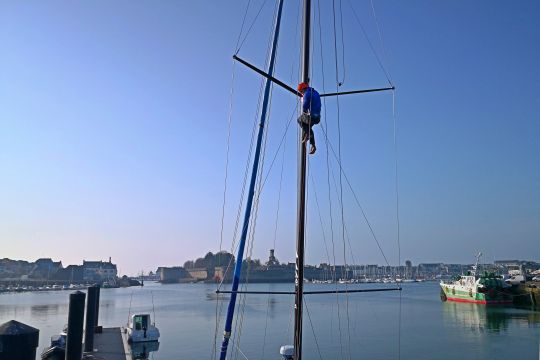
What equipment do you need to climb the mast easily and independently?
Several equipment manufacturers, such as the famous mountain gear brand Petzl, offer complete kits adapted to the needs of sailors. Other solutions include the Outils Océan mast ladder and the Swi-Tec "elevator". Croix du Sud Marine also distributes the Mast Climber. But the Petzl kit (distributed by Navicom) is the one most used by ocean racers. It's the lightest and easiest to use. It is often complemented by the Olivette, which we will describe below.
Directly from mountain gear
In order to be able to climb the mast on my own, and possibly while sailing, I had purchased a Petzl kit. Once I'd got to grips with the equipment, this system proved extremely convincing in port, as it's not so physical after all, and remains very safe. You climb slowly but surely up to the masthead, and you can control the descent.
This method, borrowed from the world of mountaineering and caving, requires that the bottom of the rope on which you are hoisted is completely free. A viable solution in the mountains, but not a pleasant one when transposed to a boat. If the boat moves, the climber will quickly swing back and forth. And therein lies the system's only drawback: you can't climb on a taut rope. If you're lucky enough to have a topping lift, you'll still be able to hang onto it with a lanyard.
What does your kitâeuros consist of?
Thanks to the experience of equipment manufacturers specializing in climbing and working at height, these packs combine safety and functionality. Let's take a closer look at what a mast-climbing kit consists of.
Composition of an autonomous ascent pack :
1- The harness must be adapted to the user's morphology, and tool holders are a plus.
2- The "self-braking descender" or "gri-gri" or "olivette". These systems are designed to secure climbing or acrobatic work on 10 to 11-millimeter ropes (9.7-millimeter ropes are tolerated). Its main function is to act as a belay system with assisted braking (not self-locking) in the event of a fall by the climber. The olivette is an even more ingenious device for sailors.
3- A foot strap, also known as a "pedal".
4- The "Blocking Handle", designed for ascents or rope work. You position the handle and it locks onto the rope. Combined with the foot pedal, it can be used to pull yourself up.
5- A mast-height climbing rope. Choose a climbing rope with plenty of elasticity and a diameter perfectly suited to the clamps.
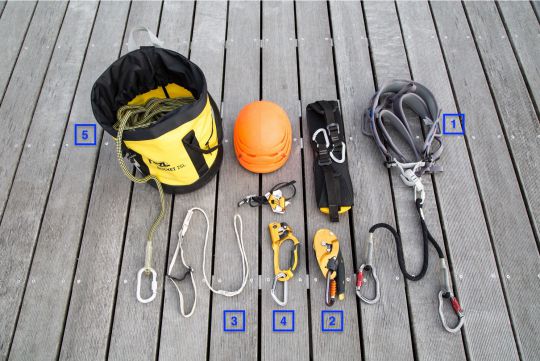
Eventually, it may be complemented by :
- A helmet is really useful for going out to sea and avoiding violent shocks against the mast.
- A pair of protective gloves
- A lanyard to hold on to a halyard and avoid swerving when climbing a free rope
- A small tool bag to carry with you
- A storage bag for immediate access to all equipment
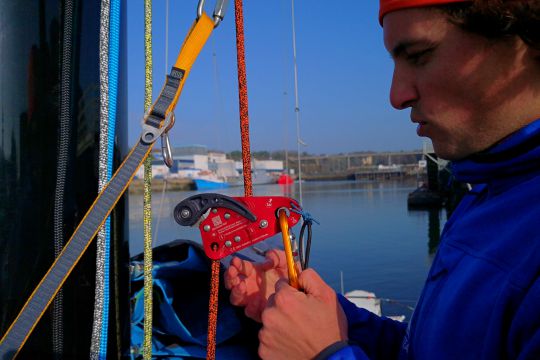
What is the principle of self hoistingâeuros with the Petzl kit?
This is how it works: a climbing rope is sent up the mast using a halyard, usually the mainsail halyard.
We have 2 locking devices. One is connected to the harness and serves as a "self-braking descender", to be used for ascent and descent. The other is a "handle blocker" (useful only during ascent) running along the rope and fitted with a foot strap. It allows you to lean (bent leg) on the foot strap to pull yourself up half a meter by standing upright.
Once up on the legs, it's time to take up the slack and move the "self-braking descender" a little higher than it was before sitting back in the harness. Then it's time to pull up the foot pedal and start again.
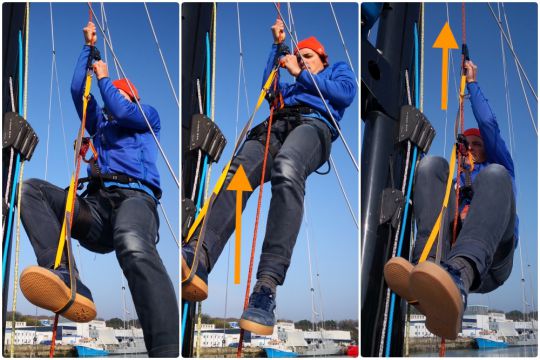
What are the âeuros limits of this system?
The big problem with this solution is that, when climbing at sea, you can't pull yourself up along a taut rope. And yet, because of the boat's movement with the waves, we'd like to climb up the mast, without regularly running the risk of smashing our shoulders, thighs, hips or head... on the mast.
The Olivette, a small, special descender introduced ten years ago, solves this problem. It allows the ascent to be made on a taut rope. We've tried it out, and it makes a big difference to the ascent to the top as well as the descent to the bottom!
What is Olivetteâeuros?
The Olivette was invented by Pascal Ollivier, a mountain man with a passion for sailing, who wanted to create a self-locking descender capable of operating on taut ropes.
An unrivalled mast-climbing solution on the market. The Olilvette is equally at home in the mountains, in acrobatic work and in rescue operations. From one patent to the next, Pascal has created a well-developed tool that is proving a great success with regatta sailors.
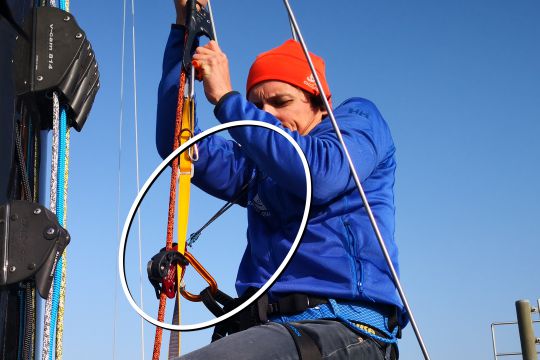
An elastic band around the neck, connected to the Olivette, allows you to follow the "self-braking descender" during ascent on a taut rope. This eliminates the need to "take up slack" by hand as you climb the mast, which is one of the advantages. But when it comes to acrobatics at sea, the most important thing to remember is that the Olivette allows you to climb a taut rope.




